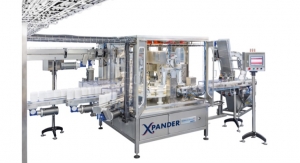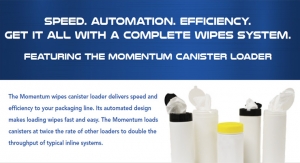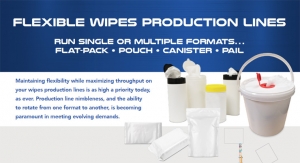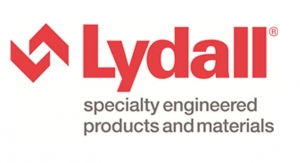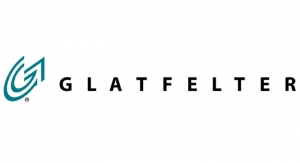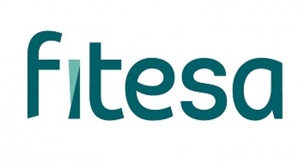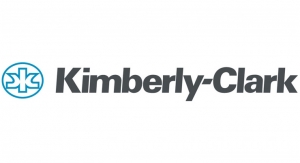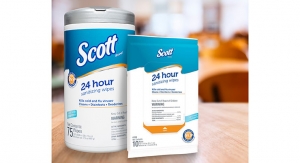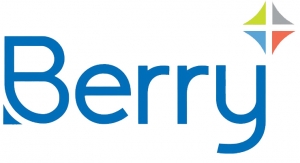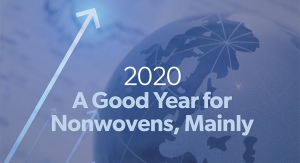06.07.18
Last week, INDA and EDANA, the leading global trade associations representing consumer wipes manufacturers and supply chains, announced publication of an update to their strict guidelines for labeling of non-flushable wipes and for assessing the flushability of disposable nonwoven wipes.
Wastewater operators across America and Europe continue to face challenges associated with clogs due to various causes, such as aging infrastructure and improper flushing habits. Despite this, flushable wet wipes continue to get much of the blame, when in fact items such as baby wipes, paper towels, tampons and sanitary pads—items not intended to be flushed down the toilet—are being found in wastewater treatment plants.
Edition Four of the Guidelines for Assessing the Flushability of Disposable Nonwoven Products (GD4) serves as a resource for manufacturers and brand owners to ensure their flushable wipes are compatible with existing wastewater infrastructure. Edition Four updates certain test methods and criteria for passing. These tests are grounded in significant research and testing carried out by INDA members and technical experts with extensive input from wastewater professionals. GD4 also includes the new Code of Practice for labeling. This new edition requires that non-flushable wipes display the “Do Not Flush” symbol on wipe packaging so that it’s viewable on shelf at the point of purchase and visible each time a wipe is removed from its dispenser package.
Edition Four of the Guidelines and the new Code of Practice for labeling are available to download at no charge from both the EDANA and INDA websites.
Nonwovens Industry spoke with INDA president Dave Rousse about the new flushability guidelines, the new code of practice for labeling, and challenges that remain for the industry.
Nonwovens Industry (NWI): How long have INDA and EDANA been working on the latest edition of the flushability guidelines?
Dave Rousse (DR): GD4 is the result of over three years of work between INDA and wastewater sector representatives. In 2014, a technical workgroup comprised of six industry and six wastewater representatives reviewed the GD3 document and concluded that it was a sound framework for assessing flushability and identified two tests for further review. Between 2015 and 2017, INDA and Wastewater conducted extensive lab and field work that informed the changes to the Slosh Box and Municipal Pump Tests in GD4.
NWI: Did it take longer than planned to publish since the wastewater industry decided to stop collaborating with the associations last year? Do the associations have any type of relationship with the wastewater industry today?
DR: We would have preferred to have published GD4 much earlier. While we could not bridge some key gaps with the North American wastewater groups we have been working with, we do maintain good relations with them and our door is always open to collaboration. We share the same goals, and continued dialog should help narrow the differences through increased understanding by each group.
NWI: Can you highlight some of the main differences between Edition Four of the Guidelines and the previous edition, GD3? Are there any new recommendations?
DR: GD4, the Fourth Edition Flushability Assessment document, introduces enhancements to two GD3 test methods: Slosh Box timing is reduced from 180 minutes to 60 minutes and percentage of pieces passing through the 12mm sieve is raised from 25% to 60%, and the Municipal Pump Test pass criteria reduced from average of 15% power increase to average of 5% power increase.
NWI: Is INDA offering any other resources regarding flushability for wipes manufacturers and others in the supply chain?
DR: Included in GD4, in the Addendum, is the updated Code of Practice for labeling of wipe packages that was announced in April, 2017. So now we have addressed both sides of the issue. We have enhanced flushability assessment testing for wipes intended to be marketed as “flushable,” about 7% of wipes sold. And we have a strong labeling protocol in the Code of Practice that addresses the 93% of wipes NOT designed nor marketed to be “flushable.” Important in this Code of Practice is the requirement that baby wipes, even if they pass the flushability assessment tests, should NOT be marketed as “flushable.” This is because of the confusion it would cause and the fact that baby wipes are the largest volume consumer wipe, and the wipe found most often in collection studies of what is on wastewater screens.
The Responsible Flushing Alliance is a consortium of groups united around promoting responsible flushing practices and adherence to soundly conceived assessment testing for wipes to be marketed as “flushable.” The website, www.ResponsibleFlushingAlliance.com, is a repository of information, reports, media stories, etc. on the issue meant to counter the misinformation so often carried by local and national media.
NWI: Are you seeing more compliance regarding new labeling requirements that were suggested in the second edition of the code of practice that was released last year?
DR: With a compliance date of November 1, 2018, we expect to see more and more wipes products in compliance with the Code of Practice for labeling. No brand owner wants consumers to know that their brand is not in compliance with its own industry’s Code of Practice, so we think this invisible guiding hand will motivate compliance.
NWI: What challenges remain for the nonwovens industry?
DR: Improper flushing of non-flushable wipes is a worldwide problem. In Europe there is a lot of current attention on plastics in the environment from single-use disposable plastic items, from straws to balloon sticks to bottles, and sometimes wipes made with “plastic” fibers. We are trying to educate consumers that flushable wipes passing our tests are not the problem because, on a performance basis, they won’t be able to pass the tests if made from plastic. They are made with plant-based fibers. So a challenge to the wipes industry, and the nonwovens industry as a whole when we include absorbent hygiene single-use products, is the end-of-life issues. These differ by country and the level and type of solid waste disposal infrastructure in the country. I think this is going to be an important issue going forward, and one where the industry trade associations, INDA and EDANA, can and will play an important and constructive role in developing factual materials and communications to constructively engage on this issue.
Wastewater operators across America and Europe continue to face challenges associated with clogs due to various causes, such as aging infrastructure and improper flushing habits. Despite this, flushable wet wipes continue to get much of the blame, when in fact items such as baby wipes, paper towels, tampons and sanitary pads—items not intended to be flushed down the toilet—are being found in wastewater treatment plants.
Edition Four of the Guidelines for Assessing the Flushability of Disposable Nonwoven Products (GD4) serves as a resource for manufacturers and brand owners to ensure their flushable wipes are compatible with existing wastewater infrastructure. Edition Four updates certain test methods and criteria for passing. These tests are grounded in significant research and testing carried out by INDA members and technical experts with extensive input from wastewater professionals. GD4 also includes the new Code of Practice for labeling. This new edition requires that non-flushable wipes display the “Do Not Flush” symbol on wipe packaging so that it’s viewable on shelf at the point of purchase and visible each time a wipe is removed from its dispenser package.
Edition Four of the Guidelines and the new Code of Practice for labeling are available to download at no charge from both the EDANA and INDA websites.
Nonwovens Industry spoke with INDA president Dave Rousse about the new flushability guidelines, the new code of practice for labeling, and challenges that remain for the industry.
Nonwovens Industry (NWI): How long have INDA and EDANA been working on the latest edition of the flushability guidelines?
Dave Rousse (DR): GD4 is the result of over three years of work between INDA and wastewater sector representatives. In 2014, a technical workgroup comprised of six industry and six wastewater representatives reviewed the GD3 document and concluded that it was a sound framework for assessing flushability and identified two tests for further review. Between 2015 and 2017, INDA and Wastewater conducted extensive lab and field work that informed the changes to the Slosh Box and Municipal Pump Tests in GD4.
NWI: Did it take longer than planned to publish since the wastewater industry decided to stop collaborating with the associations last year? Do the associations have any type of relationship with the wastewater industry today?
DR: We would have preferred to have published GD4 much earlier. While we could not bridge some key gaps with the North American wastewater groups we have been working with, we do maintain good relations with them and our door is always open to collaboration. We share the same goals, and continued dialog should help narrow the differences through increased understanding by each group.
NWI: Can you highlight some of the main differences between Edition Four of the Guidelines and the previous edition, GD3? Are there any new recommendations?
DR: GD4, the Fourth Edition Flushability Assessment document, introduces enhancements to two GD3 test methods: Slosh Box timing is reduced from 180 minutes to 60 minutes and percentage of pieces passing through the 12mm sieve is raised from 25% to 60%, and the Municipal Pump Test pass criteria reduced from average of 15% power increase to average of 5% power increase.
NWI: Is INDA offering any other resources regarding flushability for wipes manufacturers and others in the supply chain?
DR: Included in GD4, in the Addendum, is the updated Code of Practice for labeling of wipe packages that was announced in April, 2017. So now we have addressed both sides of the issue. We have enhanced flushability assessment testing for wipes intended to be marketed as “flushable,” about 7% of wipes sold. And we have a strong labeling protocol in the Code of Practice that addresses the 93% of wipes NOT designed nor marketed to be “flushable.” Important in this Code of Practice is the requirement that baby wipes, even if they pass the flushability assessment tests, should NOT be marketed as “flushable.” This is because of the confusion it would cause and the fact that baby wipes are the largest volume consumer wipe, and the wipe found most often in collection studies of what is on wastewater screens.
The Responsible Flushing Alliance is a consortium of groups united around promoting responsible flushing practices and adherence to soundly conceived assessment testing for wipes to be marketed as “flushable.” The website, www.ResponsibleFlushingAlliance.com, is a repository of information, reports, media stories, etc. on the issue meant to counter the misinformation so often carried by local and national media.
NWI: Are you seeing more compliance regarding new labeling requirements that were suggested in the second edition of the code of practice that was released last year?
DR: With a compliance date of November 1, 2018, we expect to see more and more wipes products in compliance with the Code of Practice for labeling. No brand owner wants consumers to know that their brand is not in compliance with its own industry’s Code of Practice, so we think this invisible guiding hand will motivate compliance.
NWI: What challenges remain for the nonwovens industry?
DR: Improper flushing of non-flushable wipes is a worldwide problem. In Europe there is a lot of current attention on plastics in the environment from single-use disposable plastic items, from straws to balloon sticks to bottles, and sometimes wipes made with “plastic” fibers. We are trying to educate consumers that flushable wipes passing our tests are not the problem because, on a performance basis, they won’t be able to pass the tests if made from plastic. They are made with plant-based fibers. So a challenge to the wipes industry, and the nonwovens industry as a whole when we include absorbent hygiene single-use products, is the end-of-life issues. These differ by country and the level and type of solid waste disposal infrastructure in the country. I think this is going to be an important issue going forward, and one where the industry trade associations, INDA and EDANA, can and will play an important and constructive role in developing factual materials and communications to constructively engage on this issue.



